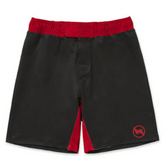Plank Workouts for BJJ: Build Core Strength and Grappling Control
A strong core is one of the biggest advantages a Brazilian Jiu Jitsu (BJJ) athlete can have. It allows you to maintain posture under pressure, keep balance during scrambles, and control your body in any position. Core strength helps with guard retention, sweeps, escapes, and applying pressure on top.
Plank workouts are one of the most effective ways to develop this kind of strength. They train your trunk to resist movement, transfer force between your limbs, and hold stable positions when an opponent pushes, pulls, or bridges.
In this article, you will learn why planks are so valuable for BJJ, the best variations for grappling, and how to progress them over time. You will also get a full eight-week program that blends perfectly with your BJJ training schedule.
What Core Strength Really Means in Grappling
In BJJ, your “core” is not just your abs. It’s a complex network of muscles that stabilize your spine and allow you to generate and absorb force. This includes the rectus abdominis, obliques, transverse abdominis, erector spinae, glutes, and hip stabilizers.
For grappling, the core needs to do four main things:
- Resist forward bending (anti-flexion) – This is what keeps you from being folded when someone pressures your guard.
- Resist twisting (anti-rotation) – Crucial when you’re trying to maintain base during sweeps or scrambles.
- Resist over-arching or side bending (anti-extension and anti-lateral flexion) – Helps you control posture in top positions.
- Hold positions for a long time (isometric endurance) – Lets you maintain posture under sustained attacks.
Planks train all of these qualities in one movement. That is why they are so effective for BJJ athletes.
Why Planks Work So Well for BJJ
Planks have several unique benefits for grapplers:
- They recruit multiple muscle groups at once, building total trunk stability rather than just targeting your abs.
- They teach you to breathe while keeping your core braced. It is an essential skill for maintaining calm posture under pressure.
- They are easy to scale up or down depending on your skill level.
- They can be done with minimal equipment and do not put excessive strain on the lower back when performed correctly.
Planks are versatile. You can use them in warm-ups, as part of strength training circuits, or as finishers to build endurance. The key is variety, mixing static holds, anti-rotation work, and dynamic movements for full carryover to the mats.
Plank Variations for BJJ (With Instructions and Benefits)
Here are the most effective plank variations for grapplers, along with tips for proper form and how they help your game.
1- Forearm Plank – The Foundation
- How: Place elbows directly under shoulders. Keep your body in a straight line from head to heels. Pull your ribs down, squeeze your glutes, and keep your core tight.
- Time: 3 sets of 30–60 seconds.
- BJJ Benefit: Builds baseline posture and endurance for maintaining positions.
2- Side Plank – Oblique and Hip Strength
- How: Rest on one forearm with your elbow under your shoulder. Stack your hips and lift them high. Keep your top arm on your hip or extended overhead.
- Time: 3 sets of 20–45 seconds per side.
- BJJ Benefit: Strengthens obliques and hips for guard retention and resisting side pressure.
3- RKC (Short-Lever) Plank – Maximum Tension
- How: Get into a forearm plank, then pull your elbows toward your toes and squeeze your glutes hard.
- Time: 3 sets of 15–40 seconds.
- BJJ Benefit: Trains high-level core tension for locking posture against an opponent’s force.
4- Plank with Shoulder Taps – Anti-Rotation
- How: Start in a high plank. Lift one hand to tap the opposite shoulder, keeping hips square and still. Move slowly and with control.
- Reps: 3–4 sets of 10–20 taps per side.
- BJJ Benefit: Builds the ability to resist twisting forces during scrambles and grip battles.
5- Single-Leg or One-Arm Plank – Unilateral Control
- How: In a forearm or high plank, lift one leg or extend one arm forward. Keep hips steady and body aligned.
- Time: 3 sets of 20–45 seconds per side.
- BJJ Benefit: Improves stability in uneven positions, like when an opponent applies pressure from one side.
6- Plank-to-Push-Up – Dynamic Stability
- How: Move from a forearm plank to a high plank, then back down. Avoid letting hips twist or sag.
- Reps: 3 sets of 8–12 transitions.
- BJJ Benefit: Develops the ability to post and recover base quickly.
7- Plank with Band Anti-Rotation – Resistance Training
- How: Attach a resistance band to one side and hold a plank while resisting the pull. Keep your torso square.
- Time: 3 sets of 8–12 breaths each side.
- BJJ Benefit: Builds strength against rotational forces, perfect for fighting off underhooks and guard passes.
8- Weighted Plank – Advanced Core Load
- How: Place a weight plate on your upper back or wear a light weighted vest. Keep perfect form.
- Time: 3 sets of 20–60 seconds.
- BJJ Benefit: Prepares you for heavy top pressure situations.
How Long Should You Hold Planks?
The ideal hold time depends on your level.
- Beginner: 15–30 seconds per set, 2–3 sets.
- Intermediate: 45–75 seconds or harder variations.
- Advanced: Weighted or unstable planks for 20–60 seconds, or circuits combining multiple variations.
Focus on perfect form first. Only increase time or difficulty when you can maintain alignment without sagging or twisting.
8-Week Plank Program for BJJ
Here is a structured plan to build core strength for grappling. Train planks 3 times per week.
Weeks 1–2 (Foundation)
- Day A: Forearm plank 3×30s, Side plank 2×20s/side, Plank shoulder taps 2×8/side.
- Day B: RKC plank 3×20s, Single-leg plank 2×15s/side.
- Day C: Forearm plank 2×20s + Bird-dog 2×10 reps/side.
Weeks 3–4 (Volume and Rotation Control)
- Day A: Forearm plank 3×45s, Side plank 3×30s/side.
- Day B: Band anti-rotation plank 3×8 breaths/side, Plank-to-push-up 3×8 reps.
- Day C: RKC plank 3×25s, Single-leg plank 3×20s/side.
Weeks 5–6 (Strength and Instability)
- Day A: Weighted plank 3×30s, Side plank with top-leg raise 3×20s/side.
- Day B: Plank with shoulder taps 4×12 taps/side, One-arm plank 3×20s/side.
- Day C: Circuit – 45s forearm plank + 30s side plank each side + 10 plank-to-push-up (2 rounds).
Weeks 7–8 (Power and Sport Specific)
- Day A: RKC plank 3×30s, Band anti-rotation 4×8 breaths/side.
- Day B: 60s mixed set – alternating single-leg planks, shoulder taps, and dynamic transitions (3 rounds).
- Day C: Maintenance – 3 sets of your best variation, moderate intensity.
How to Fit Planks Into Your BJJ Schedule
- Before rolling: Use short holds or light variations as warm-up activation.
- After drilling: Do 2–4 challenging sets to build endurance without killing your performance.
- Strength days: Include loaded or advanced variations in circuits.
- Off days: Keep volume low, focus on form and recovery.
Common Plank Mistakes in BJJ Athletes
- Hips sagging – Engage glutes and keep ribs tucked.
- Holding breath – Practice breathing while braced.
- Chasing long times with bad form – Quality is more important than duration.
- Skipping anti-rotation work – Grappling is full of twisting forces, so train for them.
Other Exercises to Pair With Planks
Planks are powerful, but they work best with other core and strength exercises:
- Hip hinges: Deadlifts, kettlebell swings.
- Rotational power: Medicine ball throws, cable rotations.
- Grip work: Farmer carries, pull-ups.
- Mobility: Hip and thoracic stretches.
Sample 30-Minute Plank Session
1- Warm-up (6 minutes)
- Light cardio and mobility drills
- 2×30s forearm plank
2- Strength block (12 minutes)
- 3 rounds: 45s RKC plank, 10 kettlebell swings, 8 single-leg Romanian deadlifts/side
3. Core circuit (8 minutes)
- 3 rounds: 30s band anti-rotation plank/side, 20s side plank/side, 6 plank-to-push-up
4- Cool-down (4 minutes)
- Deep breathing and spine mobility
Conclusion
Planks are one of the most effective tools for building BJJ-specific core strength. They train you to resist force, maintain position, and control your body during intense grappling exchanges.
By following a structured plank program, you can develop the posture, stability, and endurance needed to dominate on the mats. Stay consistent, progress gradually, and you will notice a real difference in your grappling control.





